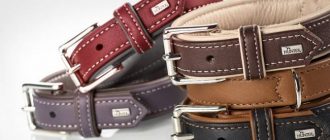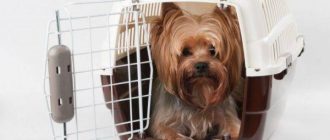Pet owners often have to provide emergency assistance to your pets. Not always within reach there is a veterinarian, so the owners need to know the rules simple and effective manipulations, for example, staging enemas.
Content
- 1. What is an enema and how does it work
- 2. Why is the dog given an enema?
- 3. What is the volume of solution
- 4. The purpose of various types of solutions
- 5. Contraindications to treatment
- 6. How to make an enema for a dog at home
- 7. How to prepare a solution
What is an enema and how does it work
Contents
The dog may have bowel problems or diseases, with which need to clean the digestive tract. Not always the animal can be given a laxative. In case the dog does not wants to take the medicine orally or to this type of treatment there are contraindications, you need to put an animal enema. 
Enema is the introduction of fluid into the lower rectum or colon with a special device. Water has high thermal conductivity, heat capacity, availability and wide spread, therefore hydrotherapy is indicated for treatment and prevention of many diseases. The enema is mechanical chemical and thermal effects. Enemas have:
- Cleansing and antitoxic effects – occurs cleansing the intestines from accumulated feces, foods the life of microorganisms and parasites.
- Stimulation of intestinal motor function – water has irritating effect on intestinal mucosa receptors. IN depending on the composition of the substances dissolved in it, water has different action. Tap and distilled water provide more irritating than isotonic or hypotonic solution. The starch solution has an enveloping effect, warm the solution relieves spasms and relaxes the intestinal wall.
- Distracting effect – hypertonic solutions contribute redistribution of fluid in edema of the brain, lungs and heat blows.
- The therapeutic properties of the drug solution.
- Nourishing action.
Enemas vary in composition and depth of penetration, as well as by temperature. In accordance with the purpose, the following types of enemas:
- siphon;
- cleansing;
- temperature-controlled;
- contrasting;
- nutritious;
- medicinal.
Enemas are prescribed for various diseases and pathological conditions.
Why is an enema prescribed to a dog?
Types of enemas and indications for their use are different. So, for example, enemas from cold water are used to reduce animal body temperature, and warm – to relax the intestines. They inflict a dog according to indications:
- with increased or decreased body temperature;
- in violation of the act of defecation;
- with food poisoning;
- to prevent intoxication with decay products during treatment helminthiasis and mass death of parasites;
- for diseases that cause inflammation of the mucosa intestines;
- when preparing a dog for a condition study digestive system;
- for the introduction into the animal organism of medicinal and nutritional substances.
It is advisable that a veterinarian appoint a procedure, as there is a number of contraindications in which it is impossible to use in therapy hydrotherapy.
What is the volume of solution
To prepare the solution, use the following substances:
- boiled and chilled water;
- decoction of chamomile, St. John’s wort, yarrow;
- baking soda;
- common salt;
- potassium permanganate;
- Vaseline oil;
- fish fat;
- medicines prescribed by a veterinarian.
Enema is filled with warm water – 36-37 ° C. For cold – no less 25-30 ° C. The volume of fluid depends on the size of the dog and the type of enema. Cleaning large breeds of dogs do in a volume of 1 liter, medium –200 ml and small – up to 50 ml. Healing microclysters make for rapid absorption of drugs, and their volume is small, usually does not exceed 10-50 ml, depending on the breed dogs.
The purpose of various types of solutions
Before any kind of enemas, intestines are washed with warm water heated to the body temperature of the animal. With atony intestines, constipation and prolonged absence of bowel movement is recommended an enema with glycerol or a soap solution. Liquid softens feces and stimulates peristalsis for speedy excretion of intestinal contents. For prolonged constipation, they recommend for the solution, take water heated to 35 ° C, and with atony – cold, the temperature of which is 17-23 ° C. 
Siphon enema intended for stool removal, leaching excess mucus, microorganisms, toxins from the intestines of the dog. For siphon use a weak pink solution of potassium permanganate or salt, heated to 40 ° C.
To relax the intestines, normalize tone, use glycerin, liquid paraffin or isotonic saline. His required to hold, pressing the tail of the animal to the anal hole.
Nutrient enema is done up to 4 times a day in the absence of appetite in a dog and a weakened animal. After the introduction of the solution it must be kept for 10-15 minutes inside to improve absorption nutrients.
For through washing the digestive organs, in the area the anus, the tip of Esmarch’s mug, smeared with petroleum jelly, is introduced, and raise it to a height of 1.5-2 m to increase pressure and provide transport of water into the stomach. If the animal begins vomiting, then operation completed correctly.
Rinsing is done until the time when from the mouth dogs will appear almost clear water. After that, the tip is removed and the dog is walked to stimulate peristalsis. Across appetite and digestion are adjusted for several hours.
Contraindications to treatment
Before putting an enema on a pet, it is necessary consult a veterinarian, as in some conditions the procedure may be ineffective, and in some cases threaten life and health of the pet. You can not use hydrotherapy with:
- large loss of fluid, so as not to dehydrate the body dogs even larger;
- suspected intestinal torsion;
- the presence of cracks, tumors in the intestine;
- internal bleeding;
- systemic pathologies in the acute phase;
- heart and kidney diseases;
- any damage to the intestines (hemorrhoids, anal fissures, ulcers, injuries, tears).
Pregnant and lactating dogs have an enema only prescribed by a doctor and with great care. Often with poisoning the animal is recommended a siphon enema from a large volume of fluid. It is not recommended to carry out such a procedure yourself, so as not to cause bowel injury. Siphon hydrotherapy should be performed with the participation or under the supervision of a veterinarian.
How to make an enema for a dog at home
If the dog is large, then help is needed so that it fix and prevent injury. Depending on breed and the size of the animal, it is placed in a basin, bath or trough and carefully lay to one side. If the dog is large, then it can be laid on an oilcloth covered with a diaper directly on the floor.
The animal should be calm, therefore it is better when the owner It is within sight and calms, strokes the dog. To prevent injuries, you can put on a dog’s muzzle. Solution put in a syringe or Esmarch’s mug, let out air.
The one who will carry out the procedure must wear medical gloves. Anus of an animal and tip of a syringe or Esmarch’s mug (depending on the volume of the enema) lubricated with liquid paraffin. Insert the tip into the anus carefully, without excessive pressure. Rotate, advance inward, adjusting depth penetration. It is 2-3 cm for medium and small breeds and up to 5 cm – for large ones.
When you press the tank, the fluid must flow out of it evenly, smoothly, without resistance. If no solution is supplied, remove tip and clean output if necessary hole, repeat the procedure. After the introduction of the required volume therapeutic enema, the tail of the pet is pressed to the anus and fix the fluid inside for 10-15 minutes. With cleansing and Siphon enema does not need to hold water. 
With the introduction of large volumes, the dog can immediately be emptied, drug enemas are so small that they can, without causing discomfort, stay inside for a long time. To exit the content may it takes time, so you can and should walk with the dog to stimulate intestinal motility and accelerate the evacuation of feces masses, bones, foreign objects. If necessary, a procedure worth repeating.
How to prepare a solution
The solution is prepared immediately before administration. Recommended following types:
- Saline solution is prepared from magnesia powder (Epsom salt) or ordinary salt. For this, 30 g of table salt or 20 g of magnesia dissolved in 100 ml of warm water. Enter no more than 50 ml solution.
- Soda is prepared by dissolving 30 g of baking soda in 1000 ml warm water. 10 g should be added to increase effectiveness. salt.
- Soapy prepared from 1000 ml of warm water and 1 tablespoon grated baby soap or any other soap. It has a neutral pH and does not contain fragrances and dyes.
- Chamomile infusion is prepared from 1 tbsp. tablespoons of dry raw materials and 1000 ml boiling water. Chamomile is poured, insisted under the lid for 20-30 minutes, filter and use for astringent enemas.
- Glycerin is made by mixing 1 tbsp. tablespoons of glycerin with 1000 ml of water.
Self-administration of enemas to the dog should be supported knowledge and experience, otherwise there is a risk of bowel injury animal. It is better to seek the help of a specialist so that learn to do the procedure later on your own. Any enema requires prior consultation of a veterinarian.






